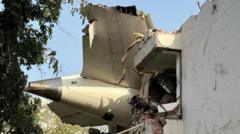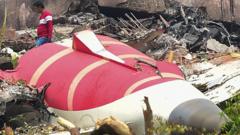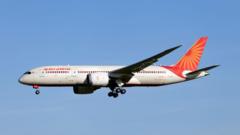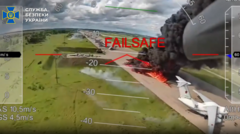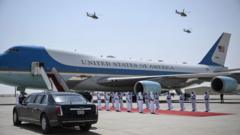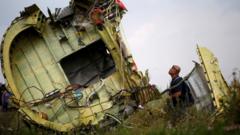As the aviation industry grapples with its impacts on climate change, experts emphasize the potential to drastically lower the warming effects of contrails, the visible vapor trails left by aircraft. Highlighted at COP29 in Baku, research shows that simple changes in flight paths could cut contrail-caused warming by over half at a cost of less than £4 per flight.
Aviation Experts Propose Simple Solutions to Mitigate Climate Impact of Contrails
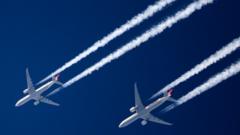
Aviation Experts Propose Simple Solutions to Mitigate Climate Impact of Contrails
A new study reveals that easy adjustments to flight paths could significantly reduce the climate-damaging effects of jet contrails at a minimal cost.
Aviation experts are advocating for straightforward measures to tackle the climate impact of contrails, the vapor trails left by jet planes, which have been identified as significant contributors to global warming. A recent study indicates that these adjustments could be implemented for just a few pounds per flight.
Contrails, which form when aircraft traverse cold, humid air, have been the subject of conspiracy theories ranging from mind control to disease spread. However, scientists emphasize that the real issue is their contribution to global warming, essentially doubling the heating effect attributed to aviation's reliance on fossil fuels.
This rising concern will be deliberated at the upcoming UN climate conference, COP29, taking place in Baku. “Contrails create an artificial cloud cover, which prevents heat from escaping the Earth,” explained Carlos Lopez de la Osa from the Transport & Environment campaign, who co-authored the new findings. “Their warming impact is comparable to that of carbon emissions from aviation.”
Despite the prevalence of 'chemtrail' conspiracy theories, which have no scientific basis, the focus remains on actionable strategies to address contrail-related warming. Matteo Mirolo, an organizer of the COP29 panel, expressed the need for clarity amid public misconceptions, stating, “Every intervention we can make is crucial in reaching a consensus on combatting the climate crisis.”
The study reveals that a small fraction of flights—around 3%—account for approximately 80% of contrail-related warming. A minor modification in the flight trajectories of select aircraft could lead to more than a 50% reduction in contrail heating effects by 2040, all achievable for less than £4 per flight.
Factors such as geographical location and flight altitude significantly impact contrail formation, with North America, Europe, and the North Atlantic representing over half of global contrail warming in 2019. Time of day and seasonal variations also play critical roles, with nighttime flights showing a disproportionate warming effect.
As weather patterns are already influencing flight routing to navigate storms, Lopez de la Osa suggests a new constraint focused on avoiding contrail formation areas. “This is perhaps one of the most straightforward climate solutions we can consider at COP29,” he said.
Alongside ongoing investments in sustainable aviation fuel research, experts hope that this dialogue will elevate awareness around contrails and their impact. They argue that resolving contrail issues presents an immediate opportunity for effective climate action at a fraction of the cost of alternative solutions, proposing it as an achievable, immediate win for the environment.

